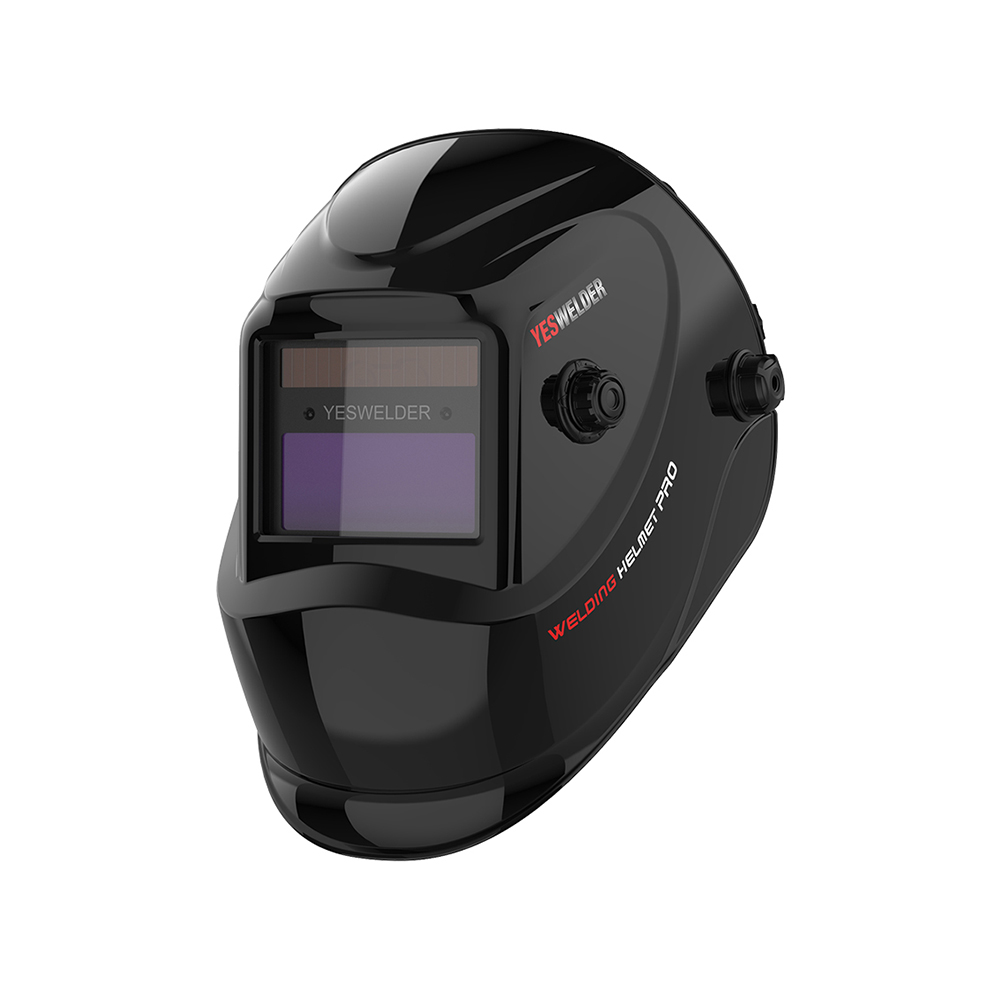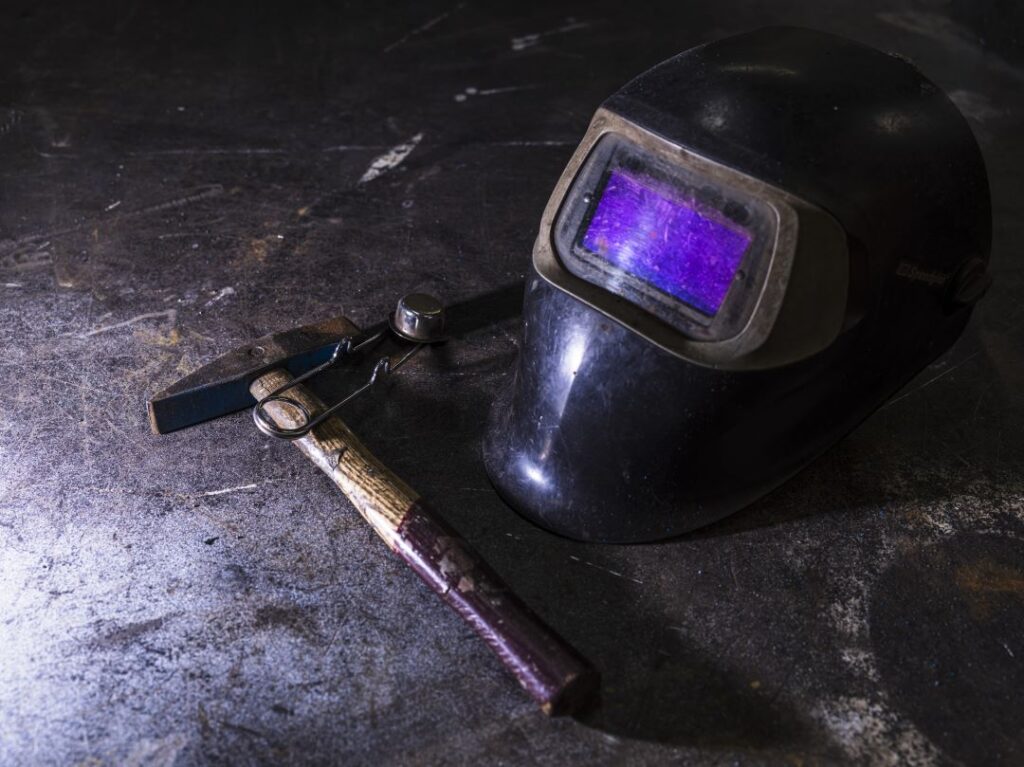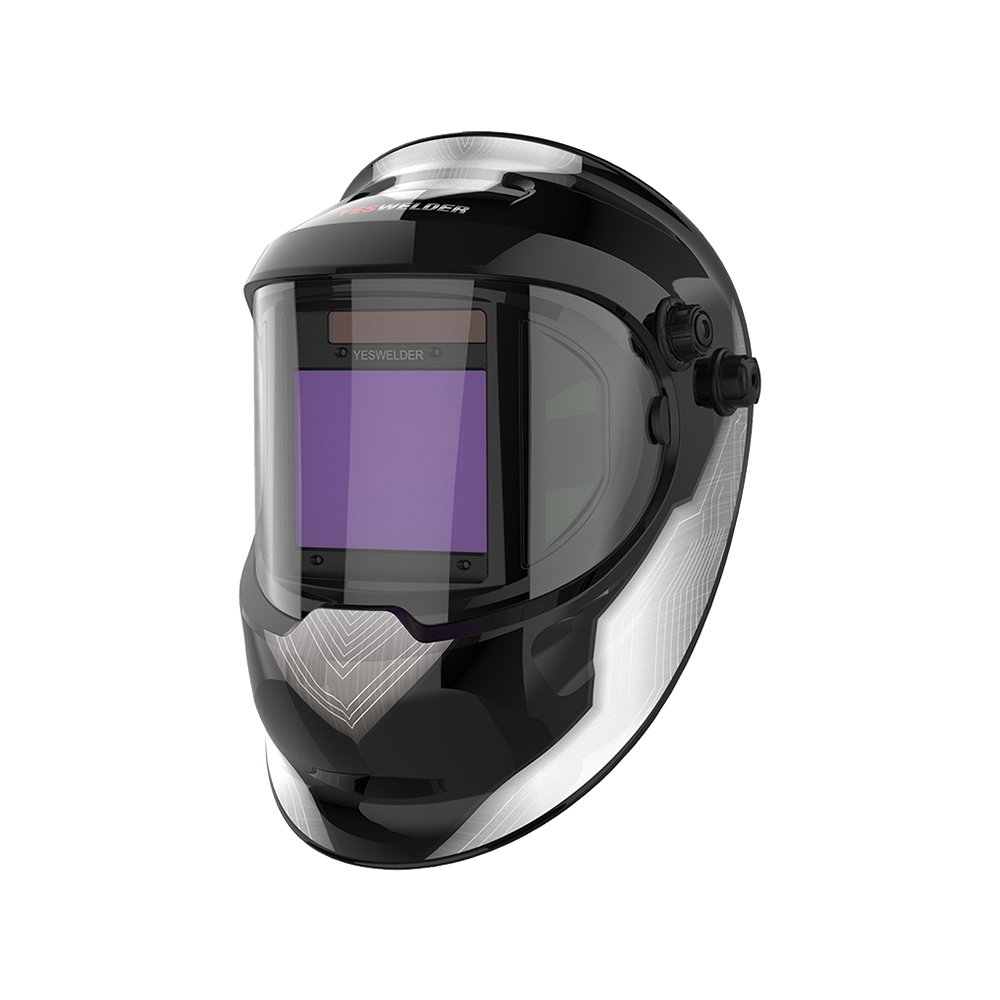Welding helmets are essential for protecting the welder’s eyes and face from harmful radiation, sparks, and debris during welding. However, choosing the right welding helmet can be challenging due to the wide variety of options available, each with different features and specifications. Many welders face the risk of inadequate protection and discomfort due to poorly chosen helmets.
The solution lies in selecting a helmet that meets all safety standards, offers the necessary comfort, and suits the specific needs of the welding job. This guide will help you navigate the complexities of welding helmet selection, ensuring you make an informed choice that guarantees safety and efficiency.
Types of Welding Helmets
Welding helmets come in various types, each designed to meet specific needs and preferences. Understanding the different types can help you select the right helmet for the job.
Passive Welding Helmets

Passive welding helmets are the most basic type. They feature a fixed shade lens, usually set to shade 10. This type of helmet requires the welder to lift the helmet between welds to see the work area. While these helmets are simple and affordable, they may cause fatigue over long periods due to the constant need to lift and lower the helmet.
Auto-Darkening Welding Helmets

Auto-darkening welding helmets are a more advanced option. These helmets automatically adjust the lens shade based on the brightness of the welding arc. When not used, the lens remains lighter, allowing the welder to see clearly. Upon striking an arc, the lens darkens to the required shade instantly. This type of helmet reduces the need to lift it repeatedly, making it more convenient and reducing neck strain.
Fixed Shade Helmets
Fixed shade helmets are similar to passive welding helmets. The “fixed shade” means the static shade level that does not change. These helmets are ideal for welders who work with consistent welding conditions and do not require frequent adjustments.
Variable Shade Helmets
Variable-shade helmets offer more flexibility than fixed-shade helmets. They allow the welder to adjust the lens shade dynamically during welding, which is particularly useful for tasks involving different welding types, such as MIG, TIG, or stick welding. Switching shades on the fly ensures optimal protection and comfort for the welder, regardless of changing light conditions.
Solar-Powered Welding Helmets
Solar-powered welding helmets have solar panels that recharge the helmet’s battery while welding. These helmets are often lighter and more environmentally friendly, relying on solar energy to power the auto-darkening feature. They may require exposure to sunlight or a welding arc to recharge fully.
Battery-Powered Welding Helmets
Battery-powered welding helmets use replaceable or rechargeable batteries to power the auto-darkening lens. They offer consistent performance regardless of lighting conditions. The primary advantage of battery-powered helmets is their reliability, even in low-light situations. However, they require regular battery replacement or recharging to maintain functionality.
Comparison of Different Types of Welding Helmets
| Type of Welding Helmet | Description | Advantages | Disadvantages |
| Passive Welding Helmets | Fixed shade lens, typically shade 10. | Simple, affordable. | Requires frequent lifting of the helmet. |
| Auto-Darkening Welding Helmets | Automatically adjusts lens shade based on arc brightness. | Convenience reduces neck strain. | They are more expensive than passive helmets. |
| Fixed Shade Helmets | Adjustable fixed shade lens, usually between 9-13. | Consistent protection for specific tasks. | Less flexibility in varied light conditions. |
| Variable Shade Helmets | Allows dynamic adjustment of lens shade during welding. | Flexibility for different welding tasks. | It may require more frequent adjustments. |
| Solar-Powered Helmets | Uses solar panels to recharge the battery. | Environmentally friendly, lightweight. | Requires exposure to light for recharging. |
| Battery-Powered Helmets | Uses replaceable or rechargeable batteries for power. | Reliable in low-light conditions. | Needs regular battery replacement or recharging. |
How to Choose a Reliable Welding Helmet Supplier

When selecting a welding helmet supplier, it’s essential to consider various factors contributing to the helmet’s overall quality, safety, and durability. Here’s a guide to help you choose a reliable supplier based on critical features.
Lens Quality and Clarity
- The lens is a crucial component of a welding helmet, directly impacting the welder’s ability to see the workpiece.
- Look for suppliers that offer helmets with high optical clarity, which ensures minimal distortion and a true color view.
- Ensure the lens meets industry standards, like ANSI Z87.1, for reliable protection against harmful UV and IR rays.
- Check if the supplier provides helmets with auto-darkening lenses. These lenses should have a quick response time to protect the welder’s eyes from the bright welding arc.
Shell Material
- The helmet shell should be made from durable, heat-resistant materials to protect the welder from sparks and debris.
- Consider suppliers that offer helmets made from lightweight materials like polycarbonate or fiberglass, which protect without causing fatigue.
- Verify that the helmet shell is impact-resistant and capable of withstanding tough working conditions.
- The material should also be flame-resistant, ensuring safety when exposure to high temperatures is risky.
View Area
- The view area is the lens size through which the welder sees the workpiece. A larger view area offers better visibility.
- Select suppliers that provide adjustable viewable helmets, catering to different welding tasks and preferences.
- A larger view area reduces the need to move the head frequently, enhancing precision and comfort during welding.
- Ensure that the view area does not compromise the helmet’s overall weight and balance, which could affect comfort.
Sensitivity and Delay Controls
- Sensitivity controls adjust how easily the helmet’s lens darkens in response to the brightness of the welding arc.
- Choose welding helmet suppliers with adjustable sensitivity settings suitable for various welding processes, such as TIG, MIG, or stick welding.
- Delay controls allow the welder to adjust the time it takes for the lens to return to its normal state after welding. This feature protects the eyes from residual light after the arc is extinguished.
- Look for helmets with easy-to-use controls that allow the welder to customize settings based on the specific job requirements.
Weight and Comfort
- A helmet’s weight can significantly affect the welder’s comfort, especially during long periods of use.
- Consider suppliers that offer lightweight helmets, which reduce strain on the neck and shoulders.
- Check if the helmet’s design includes padded headgear and adjustable straps for a secure and comfortable fit.
- Suppliers should provide options that balance weight and durability, ensuring the helmet is protective and comfortable.
Durability
- Durability is a key factor in ensuring the long-term value of a welding helmet.
- Choose suppliers known for providing helmets that can withstand harsh working environments without compromising safety.
- The helmet should have a robust design, with components like the lens and headgear built to last and resist wear and tear.
- Look for suppliers that offer warranties or guarantees on their helmets, reflecting their confidence in the product’s longevity.
Reputation and Reviews
- Research the supplier’s reputation in the market by reading customer reviews and testimonials.
- Reliable suppliers will have a strong track record of satisfied customers, indicating consistent product quality and customer service.
- Look for industry certifications or endorsements validating the supplier’s commitment to safety and quality.
- A supplier with a good reputation is more likely to provide reliable and high-quality welding helmets.
Price and Value
- While price is important, it should not be the only factor when choosing a supplier.
- Compare prices among suppliers, but focus on the overall value, including the helmet’s features, durability, and safety standards.
- Suppliers offering helmets at significantly lower prices may compromise quality, so ensure the helmet meets all safety requirements.
- Consider suppliers that provide value-added services, such as after-sales support or customization options, which can enhance the purchasing experience.
Features of Welding Helmets by Category
| Features | Description | Importance | Consideration |
| Lens Quality and Clarity | High optical clarity, minimal distortion, and true color view. | Ensures accurate visibility and reduces eye strain. | It should meet industry standards like ANSI Z87.1. |
| Shell Material | Durable, heat-resistant, impact-resistant materials like polycarbonate or fiberglass. | Protects against sparks, debris, and high temperatures. | Lightweight materials are preferable for long-term comfort. |
| View Area | Size of the lens through which the welder sees the workpiece. | Larger view areas enhance visibility and precision. | It should be balanced with the overall weight of the helmet. |
| Sensitivity and Delay Controls | Adjusts lens response to arc brightness and delay time for lens recovery. | Customizes protection and comfort for various welding processes. | Easy-to-use controls are essential for quick adjustments. |
| Weight and Comfort | Affects the welder’s comfort during prolonged use. | Lightweight helmets reduce neck and shoulder strain. | Padded headgear and adjustable straps improve comfort. |
| Durability | Long-term resilience against wear and tear with a robust design. | Ensures the helmet’s longevity and consistent protection. | Look for warranties or guarantees as a sign of the helmet’s durability. |
| Safety Standards | Compliance with standards like ANSI Z87.1, EN379 CE, and CSA Z94.3. | Guarantees the helmet’s effectiveness in protecting the welder. | Always verify certifications to ensure the helmet meets required safety standards. |
Safety Standards
When selecting a welding helmet, it is essential to ensure it complies with recognized safety standards. These standards guarantee that the helmet provides adequate protection during welding.
ANSI Z87.1
The American National Standards Institute (ANSI) Z87.1 standard is widely recognized in the United States. It ensures that helmets offer protection against impact, optical radiation, and other hazards. Helmets meeting this standard provide reliable defense against flying debris and harmful light.
EN379 CE
The EN379 CE standard is primarily used in Europe and focuses on the quality of auto-darkening filters in welding helmets. Helmets with this certification are tested for their ability to protect the eyes from UV and IR radiation. This standard ensures consistent lens darkening and clarity during welding.
CSA Z94.3
The Canadian Standards Association (CSA) Z94.3 standard is a key safety guideline in Canada. It covers eye and face protection devices, including welding helmets. Helmets adhering to this standard are tested for durability, lens quality, and impact resistance.
YesWelder Helmet: Professional Welding Helmet

YesWelder helmets are an excellent choice for both professional and hobbyist welders. They are designed with high-quality materials that ensure durability and reliability. One of the standout features of YesWelder helmets is their true color technology, which enhances visibility by providing a clear and accurate view of the welding area. This technology reduces eye strain and improves the precision of the work.
YesWelder helmets offer a large viewing area, allowing welders to see more of their work without constantly adjusting their head position. For those looking to add a personal touch, YesWelder also provides options for customized graphics designed by specialized artists, making the helmet both functional and unique.
FAQs
What is the difference between passive and auto-darkening welding helmets?
Passive welding helmets have a fixed shade lens while auto-darkening helmets automatically adjust the lens shade based on the brightness of the welding arc.
How do I choose the right welding helmet for my needs?
Consider factors such as lens quality, viewing area, helmet weight, comfort, sensitivity controls, and the specific type of welding you will be doing.
Are auto-darkening welding helmets safe for my eyes?
Yes, auto-darkening helmets are safe and protect against harmful UV and IR rays, even when the lens is not darkened.
What safety standards should a welding helmet meet?
Look for helmets that meet standards like ANSI Z87.1, EN379 CE, and CSA Z94.3, which ensure proper protection and quality.
Can I get a custom-designed welding helmet?
Some brands, like YesWelder, offer options for customized graphics, allowing you to personalize your welding helmet.



